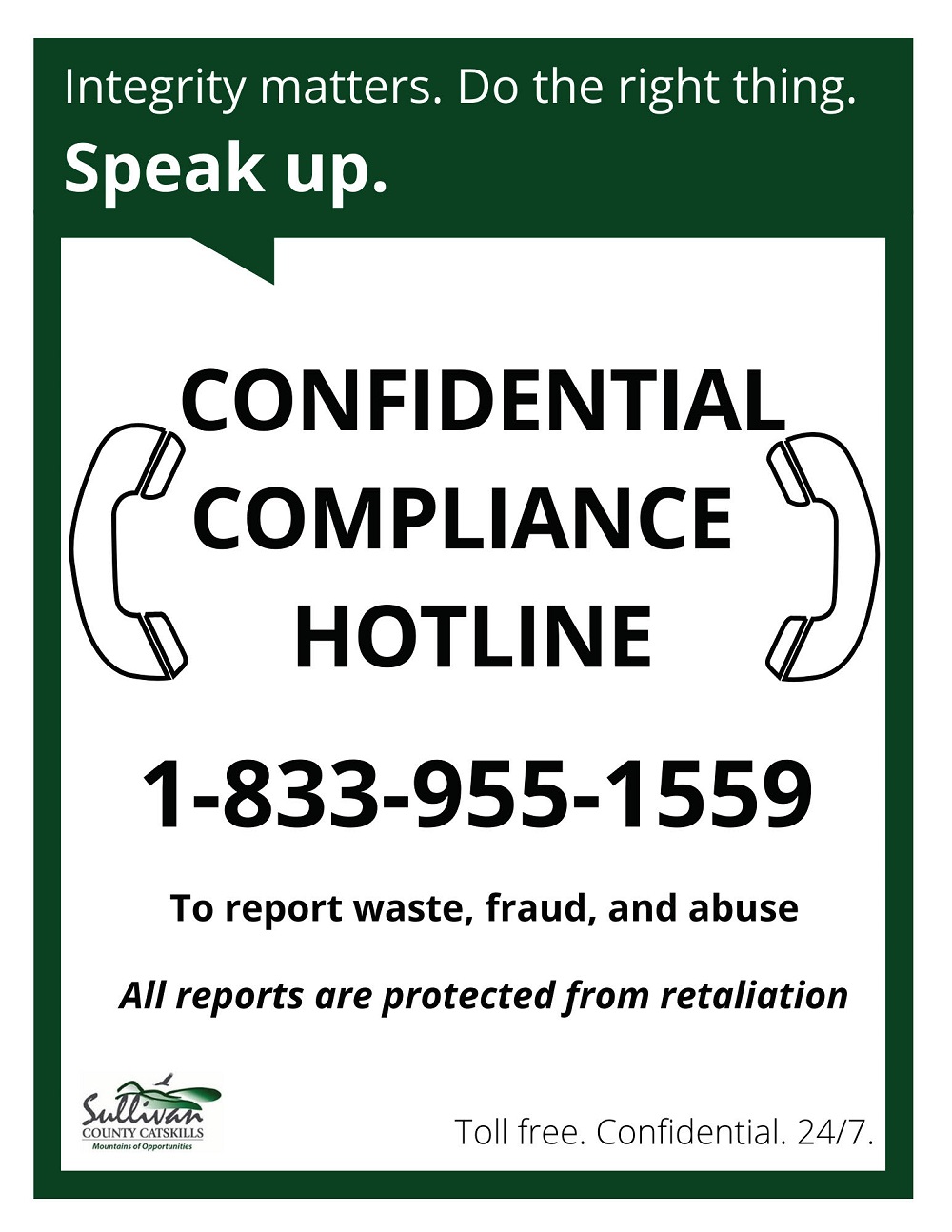There is Always Hope.
Anyone seeking help fighting substance use disorders may come to any local police station and ask for the ‘Hope Not Handcuffs’ program. Everyone will be treated with compassion and respect, while a call will be made to an ‘angel’ volunteer from the Hope Not Handcuffs – Hudson Valley team who will actively seek out a treatment plan. For more information, stop by your local police station, call 833-428-HOPE or visit https://www.tricountycommunitypartnership.org/hopenothandcuffs
Angels Wanted
Hope, Not Handcuffs – Hudson Valley is also seeking volunteer “angels” specifically for Sullivan County. “Angels” are people who help participants complete paperwork and place a call to the appropriate provider for treatment assistance.
Meetings are safe and always take place at a participating police station. Once a treatment option is found, transportation is arranged.
Volunteers pick their “on call” days and hours, after they have completed training. For more info and to apply, visit https://www.tricountycommunitypartnership.org/hopenothandcuffs.
Sullivan County Community Services is now offering Medication Assisted Treatment. For more information, click here
Sullivan County Pharmaceutical Drug Drop-Off Box Locations:
Fallsburg Police Dept.
19 Railroad Plaza
South Fallsburg, NY 12779
(845) 434-4422
Liberty Police Dept.
159 North Main Street
Liberty, NY 12754
(845) 292-4422
Monticello Police Dept.
2 Pleasant Street
Monticello, NY 12701
(845) 794-4422
Department of Social Services
Robert Travis Building
16 Community Lane
Liberty, NY 12754
(845) 292-0100
8:00 AM - 5:00 PM Monday-Friday
What is an Opioid?
Opioids are substances derived from the opium poppy that are primarily used to treat pain. They work by altering an individual’s perception and tolerance to pain; however, they can become addictive. Many individuals who experience chronic pain take legally prescribed opioid medications to manage their pain. There are also illegal forms of opioids that are used by some individuals for recreational use. Examples of opioids include:
- Oxycontin
- Oxycodone
- Morphine
- Demerol
- Heroin
- Methadone
- Fentanyl
*One major detrimental effect of excessive ingestion of opioids is respiratory depression. The medications, in large quantities, interfere with a person’s breathing, resulting in death or brain damage from lack of oxygen.
The Epidemic of Overdose
Throughout the United States, the use of opioid medications has increased dramatically since 1999 in an effort to better manage chronic pain. The unintended effect of this has been an increase in the number of opiates that are available for use both legally and illegally. Substance use rates have risen significantly and with that, the rate of mortality from drug overdose related to these medications. In the United States, approximately 145 people per day die from opioid overdose.
Reducing the Mortality Rate: Registered Naloxone Training Program
To combat the problem, Sullivan County Public Health became a Registered Opioid Overdose Prevention Program in 2014. The program allows for accurate data gathering related to the overdose epidemic in Sullivan County, NY, training programs specific to the area of expertise of the responder, and distribution and monitoring of naloxone, a medication that serves as an antidote to opioids. The naloxone works by pushing the opiate off of the receptor site in the brain.
Training Programs Available:
Classes can be scheduled by contacting Sullivan County Opioid Overdose Prevention Program at 845-292-5910, Ext. 0, or narcan@sullivanny.us. Following the initial certification, recertification courses are required to be completed by responders every two years in order to maintain their status as Overdose Responders. All courses follow the NY State Department of Health regulations regarding opioid training requirements.
Law Enforcement
Law Enforcement courses are approved through the Department of Criminal Justice Services and provide the officer with a certificate of completion from them. The course is completed in two hours and includes theory on overdose response and hands-on practice using intranasal naloxone kits.
EMS/Firefighters
BLS and Fire Departments interested in conducting a course can contact us to schedule a date and time that is convenient. We offer the option of evening sessions for your convenience.
School Nurses and School Personnel
NYSDOH has approved training for School Nurses and School Personnel. Please contact our office for more information or to plan a course for your district personnel.
RNs living in Sullivan County
NYSED has updated the Nurse Practice Act allowing RNs to carry and administer naloxone in an emergency. Contact us to register.
No Needles Approach
This training provides the responder with valuable information regarding the risk factors for overdose, recognition of an overdose, how to respond to an overdose situation, and hands-on training with the naloxone device. Naloxone can be administered in a number of different forms. For this program, intranasal naloxone was selected due to the reduced risk of exposure to needlesticks that could potentially occur using the other administration methods. Research indicates that intranasal naloxone is absorbed very quickly and is as effective as other methods of administration in reversing an opioid overdose.
Community Training / Additional Initiatives
- Sullivan County Substance Use Task Force
- Community Naloxone Trainings are available by request
BACK TO TOP


